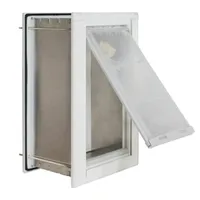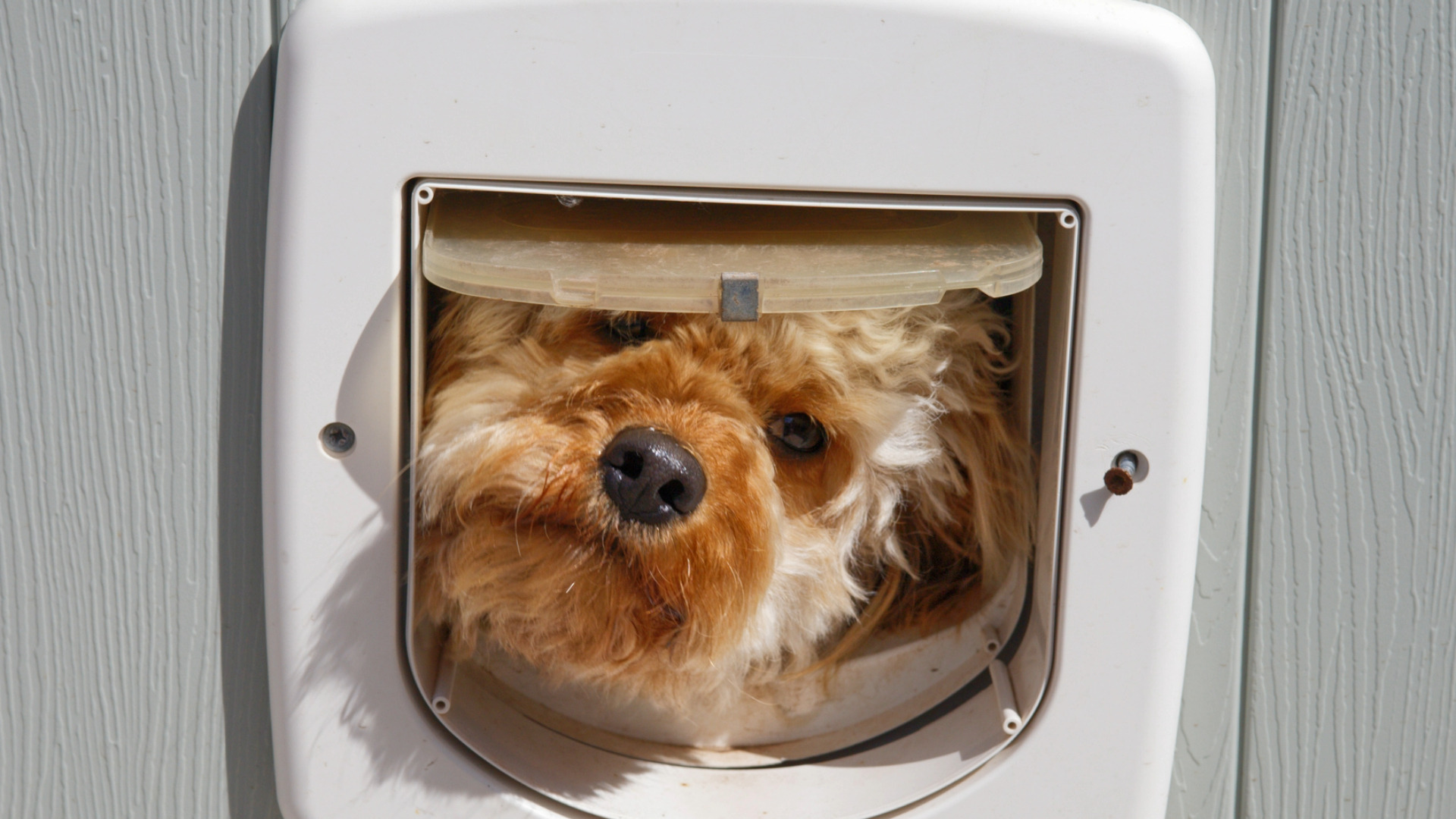
If you’re looking to install a pet door for your furry friend, you might feel overwhelmed by the sheer number of pet doors available to buy. With a variety of types, some electronic, some with timers, it can be hard to decide which will best suit you, your pet, and your home.
What’s more, once you’ve finally chosen a pet door, you have to worry about the stress of installing it: do you do it yourself or do you call in a professional? If you’re not sure what to expect from a pet door installation, we’ve broken the process down below to help you decide whether it’s within your skill set to do a DIY installation.
If you’re not sure which pet door to invest in, we’ve rounded up the best microchip cat flaps, which can be great for letting you track your cat as they come and go. Plus, if you’re wondering, ‘how do microchip cat flaps work?’ or how to make the transition from indoor to outdoor cat, we’ve investigated the answers to these questions so you don’t have to.
How to install a pet door
What you will need:
- Measuring tape
- A pencil
- A level
- A screwdriver
- A drill
- A jigsaw
- Caulk
- Eye safety equipment
Instructions:
We advise you to always follow the installation instructions that come with your pet door, but you can follow this general guide for a step-by-step of what to expect.
1. Measure your pet
Get the best advice, tips and top tech for your beloved Pets
You need to ensure that the pet door is a suitable size for your pet. Ideally, the door should stand three inches above the floor and at least an inch above your pet’s back for them to fit through properly. Take the back measurement from their wither as this is their tallest unmoving point.
There should also be a two-inch allowance on either side, on top of a measurement from the widest part of your pet.
If your pet is young and you’re not sure how much growing they have left to do, it might be worth waiting until they’ve reached their full height before choosing a pet door to ensure you won’t need to repeat the process.
If you think it’s going to be too tight a squeeze, or your pet isn’t very mobile, a bigger door will likely be better. They shouldn’t be stepping over anything taller than a third of their own height, as this can become tricky to clear as they age, so bear this in mind when placing the pet door.
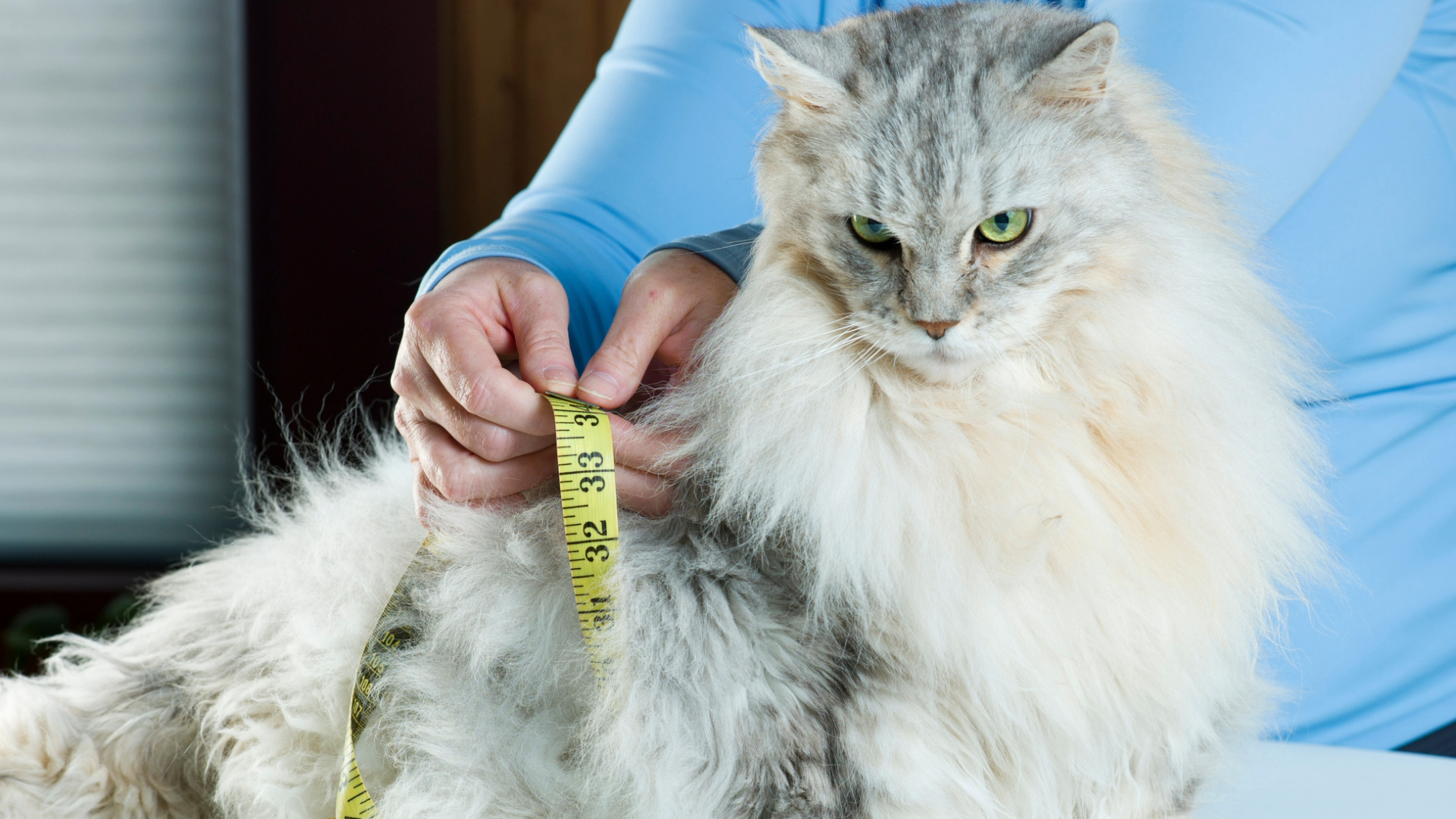
2. Find out what material your door is made from, and assess the difficulty of the job
A hollow door will be the easiest kind in which to install your pet door, but you can still install them in a solid door or panel door. You are likely to need some assistance from a professional if your door is made from metal or glass.
3. Mark up the door
Your new pet door should come with a template that you can attach to the door. Once you’re sure of the placement, mark up the drill points from the template with a pencil. You can now remove the door from its hinges and lay it between two surfaces, placing towels under the door to prevent marking it. Make sure there is plenty of space to move around it and no risk of catching anything with the jigsaw when it comes to cutting.
4. Drill the holes
Once you’re happy that you’ve marked up the door correctly (remember if you measure twice, you’ll only need to cut once) then you can drill the holes. Start with a half-inch drill bit and make holes in the center of the drill points you marked up earlier. If the door requires screws, follow up with the recommended size of drill bit.
5. Connect the drilled holes
Use a ruler or level and a pencil to draw straight lines between the holes you’ve drilled and double-check with the template to ensure that the lines are in the correct place.
6. Cut out along the outline with your jigsaw
Using a sharp blade, use a jigsaw to follow the pencil line you’ve drawn, starting in one of the drill holes you made earlier. Take breaks as needed and readjust the jigsaw at each corner/drill hole.
7. Fit the interior and exterior doors
Once you’ve removed the piece of the door you have sawed out, you can fit the interior and exterior parts of the pet door (make sure you’re putting the right side in the right place). Use your level to double-check the placement and then insert the screws into the screw holes you have left. Use your screwdriver to tighten them up until secure.
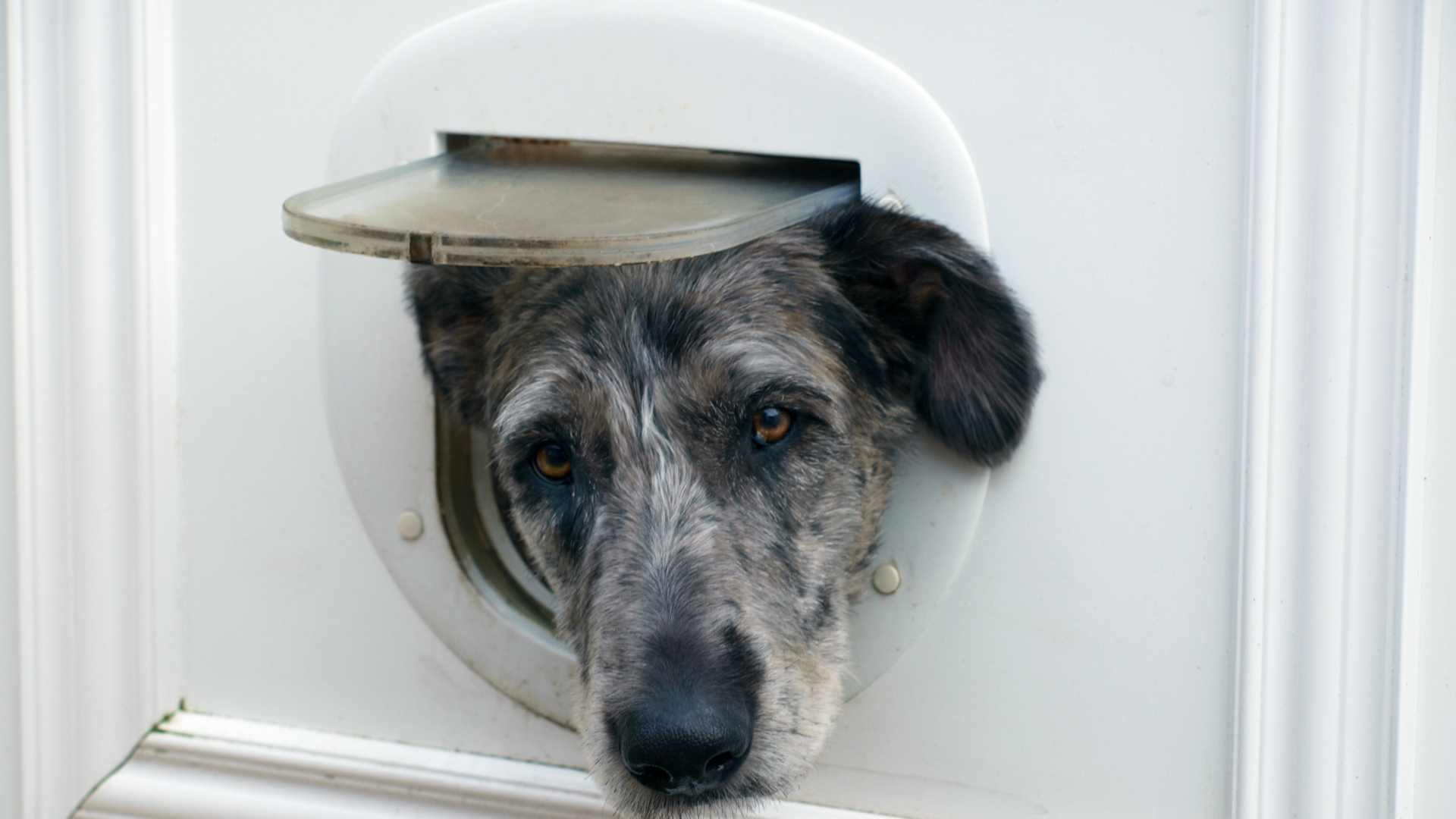
8. Rehang the door
You can do this before you fit the two sides of the pet door, but it might be easier to do so while the door is off its hinges. Once everything is secured, you can put the door back in the frame and secure the hinges.
9. Caulk around the outside of the pet door
This step isn’t always necessary, but will ensure a watertight, secure seal on your pet door.
FAQs:
Is it hard to install a pet door?
This depends on your skill level. If you’re a seasoned carpenter, a pet door installation will be no sweat off your back, but if you’ve never attempted any DIY before, you might find it much harder.
As a rule of thumb, if you’ve never used the listed tools before or taken a door off its hinges, it might be worth getting help from someone who has the experience to help you out. You can still do the job yourself, but gentle guidance can prevent you from making mistakes.
Will all cats use a pet door?
Your cat may take a little time to get used to your new pet door and to begin to use it. Here’s how to train a cat to use a cat door to speed up the process.
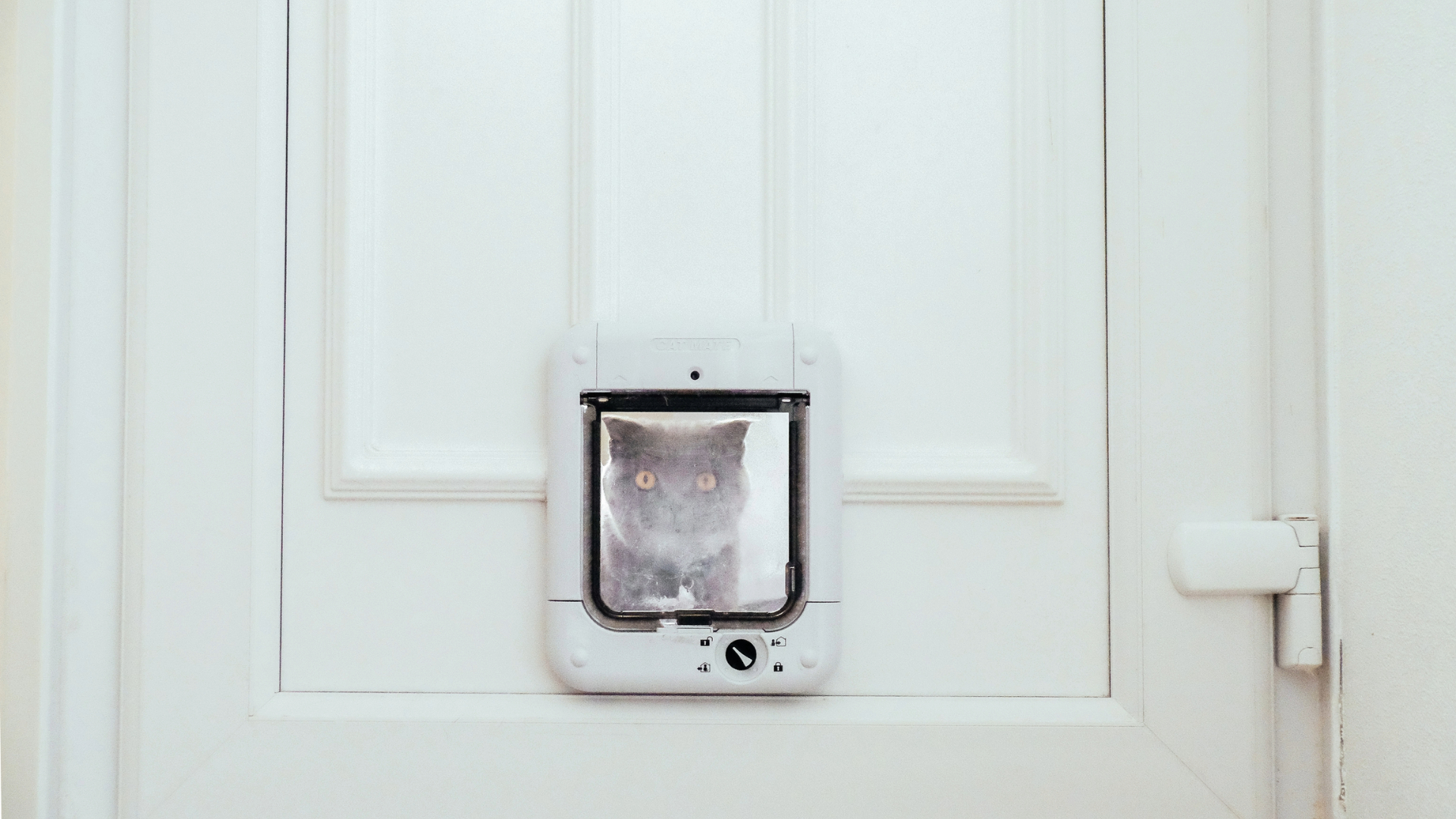
Can you put a cat flap on an internal door?
Whether you have indoor or outdoor cats, you might be looking to install a cat flap in an interior door, rather than on a door that leads outside. There are a number of reasons to do this, such as ensuring your cat always has access to their litter, food, and water even if a door is shut, and preventing larger pets from gaining access to these things at the same time. These are some great cat door alternatives.
Can someone break in through a cat flap?
This depends on the placement of the pet door. Some more creative thieves may use a hook on a stick to go “fishing” through a cat flap, stealing your belongings without ever having to break in. Keep your keys out of sight and out of reach and ensure you deadlock your door if the handle is within reach of the cat flap. You can also lock the cat flap if necessary (if you’re going away on holiday and your cat is staying in a cattery, for instance).
Can I have an outdoor cat without a cat flap?
If your cat lives mostly outdoors, you may both be quite happy having no cat flap. Your cat will learn to ask to be let in or let out when they need to and you can open the door for them. You can also leave a window open for them to come and go if that suits you. If you’re worried about your outdoor cat making a mess of the neighbor’s gardens, our guide on how to train an outdoor cat to use a litter box might come in handy.
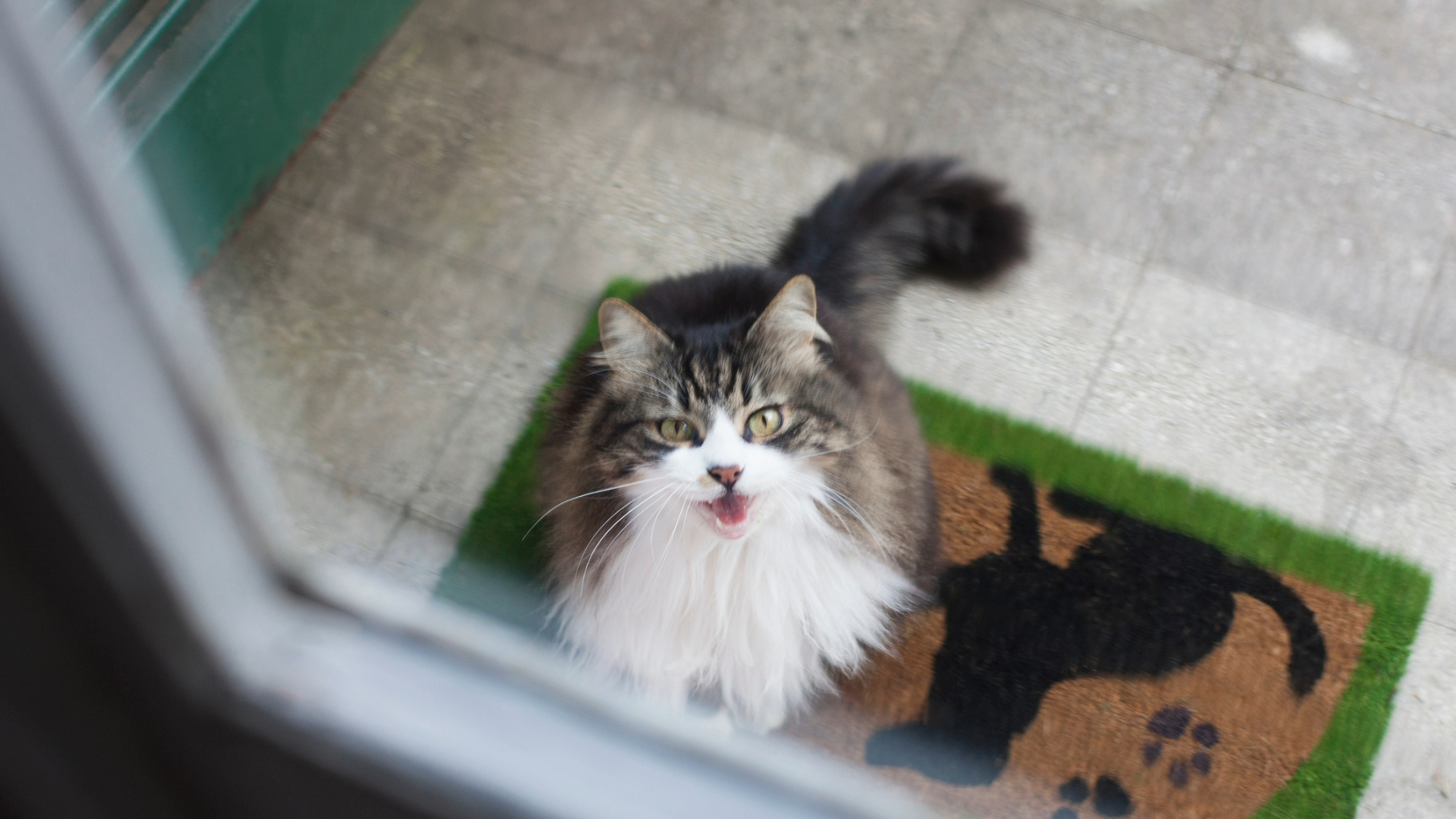
If you’re the owner of an adventurous outdoor cat, then check out the best outdoor cat enclosure to give your kitty the option to shelter from the elements without coming inside your home. Or, if installing a pet door has given you the taste for DIY, have a look at these DIY outdoor cat house ideas for your next project.
Endura Flap Single Flap Wall Mount Dog & Cat Door
This no-fuss pet flap allows your furry friends to come and go as they please, and is available in two different colors and three sizes. The magnetic seal withstands winds of up to 50 miles per hour, while the locking cover gives you peace of mind for security.
Lou is an experienced writer and keen dog lover who works at PetRadar's sister site, LiveScience. When Lou isn't covering health and fitness, she's busy spending time with her family dogs or growing all kinds of veggies and flowers on her allotment.
